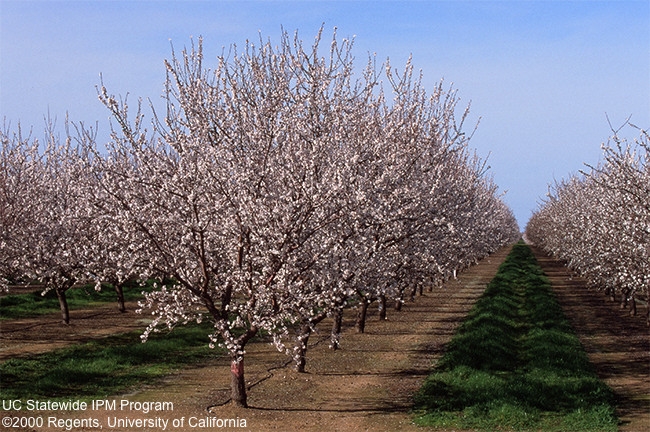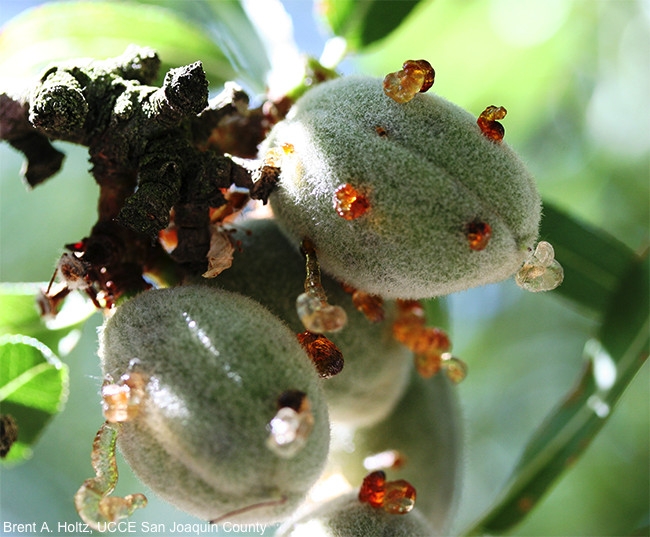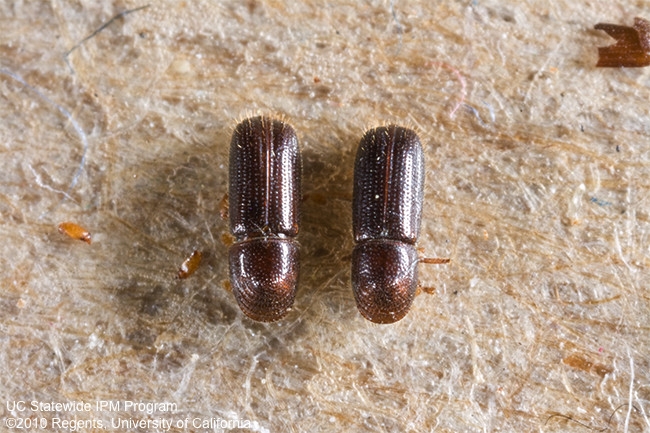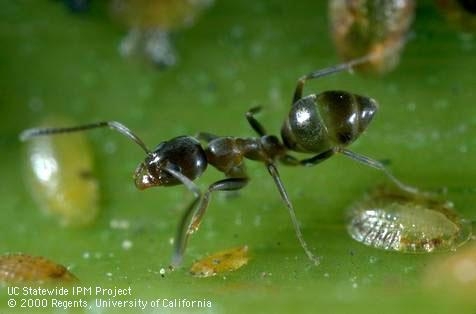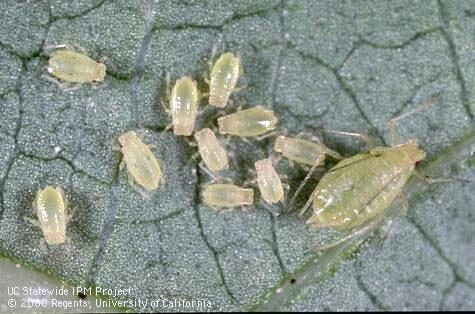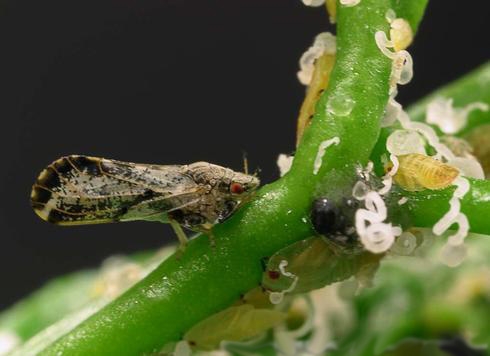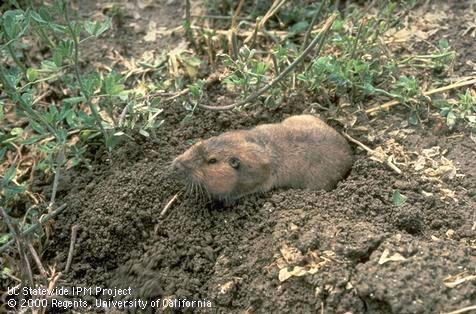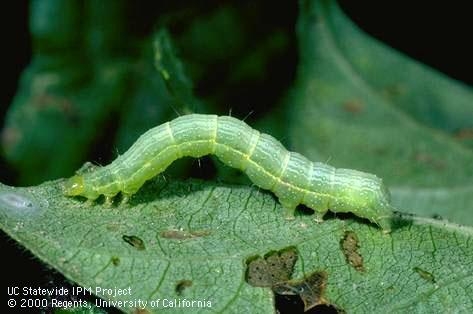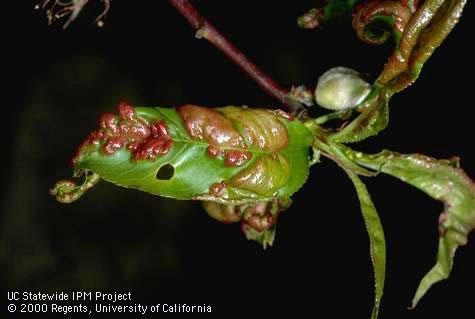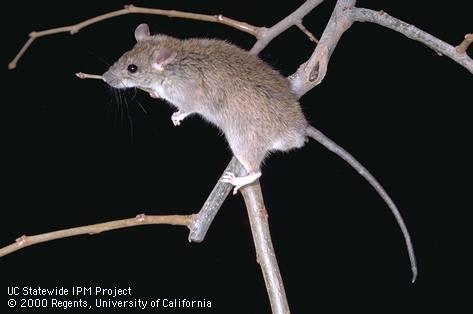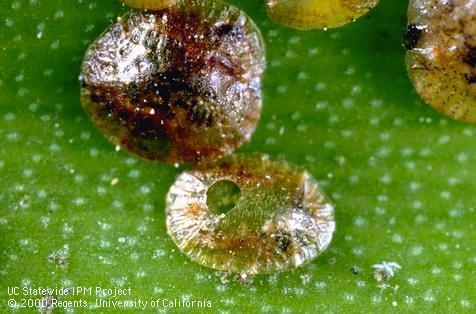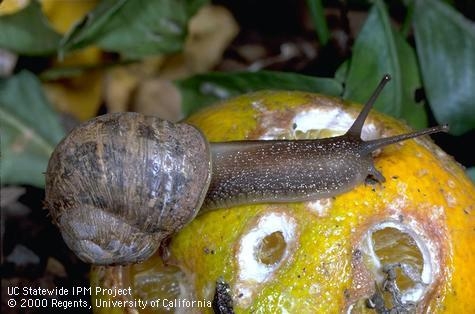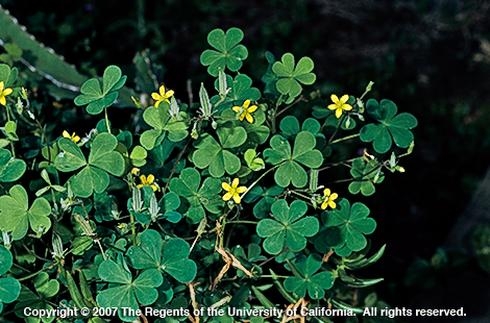Posts Tagged: pests
Katja Poveda: Zeroing in on Plant-Insect Interactions
Let's consider plant-insect interactions in agro-ecosystems. That's what Katja Poveda, assistant professor of entomology, Cornell University,...
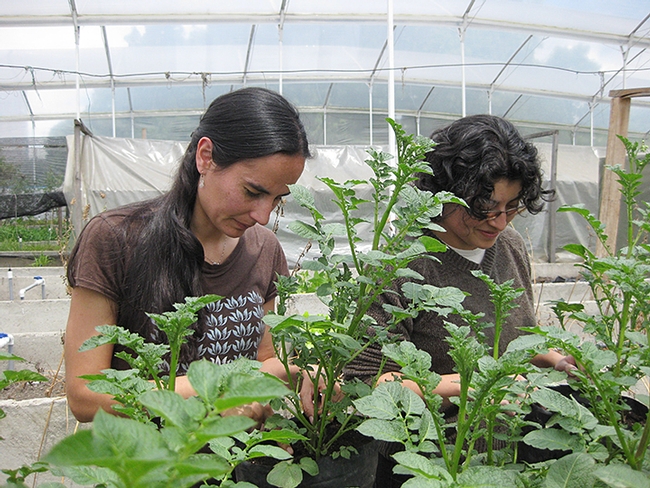
Katja Poveda (left), assistant professor of entomology at Cornell, working on potatoes in her greenhouse.
Almond and Walnut Pest Management Guidelines revised just in time for the holidays
‘Tis the season for baking lots of tasty treats. Breads, cookies, cakes, and candy are just a few that come to mind. What makes many of these treats so tasty is the addition of almonds or walnuts to the list of ingredients.
In California, we are lucky to be at the center of almond and walnut production. According to the California Department of Food and Agriculture's (CDFA's) latest Agricultural Statistics Review, more than 99 percent of the almonds and walnuts produced in the United States are grown in California.
Almond and walnut growers work tirelessly to supply enough nuts to not only satisfy domestic demand, but also for export. Worldwide, almonds rank as the largest specialty crop export. California is the top almond producer in the world, accounting for about 80 percent of all almonds grown. For walnuts, California ranks as the second largest producer in the world. To keep up with this demand, almond and walnut growers must be constantly aware of pests, diseases, and abiotic problems that can affect the tree and growing nuts.
The University of California Statewide Integrated Pest Management Program (UC IPM) has recently published revised Pest Management Guidelines for almonds and walnuts, helping growers prevent and manage pest problems with the most up-to-date information.
Revisions in the Almond Pest Management Guidelines include:
- A new section on bacterial spot, a new disease of almond in California found in the Sacramento and northern San Joaquin valleys
- A renamed section on fruit russeting, revised from the old powdery mildew section
- Significant revisions made to the management section of navel orangeworm, one of the major pests attacking California almonds
- Improvements on how to do dormant spur sampling section with easier-to-understand information on monitoring and thresholds
Revisions in the Walnut Pest Management Guidelines include:
- Updated information on the association between walnut twig beetle and thousand cankers disease
- New sections for Botryosphaeria and Phomopsis cankers, branch wilt, and paradox canker
- Significant changes to the walnut husk fly management section
Both the almond and walnut revised Pest Management Guidelines also include updated information on fungicide efficacy, weed management, and vertebrate management.
Authored by University of California specialists and advisors, the Pest Management Guidelines are UC's official guidelines for monitoring and managing pests in California crops. For more information on pest management in these or other crops, visit the UC IPM website.
Oh, the Bugs They Saw at the Bohart!
They learned about sawtoothed grain beetles, carpet beetles and other pantry pests. They learned about walking sticks, Madagascar hissing...
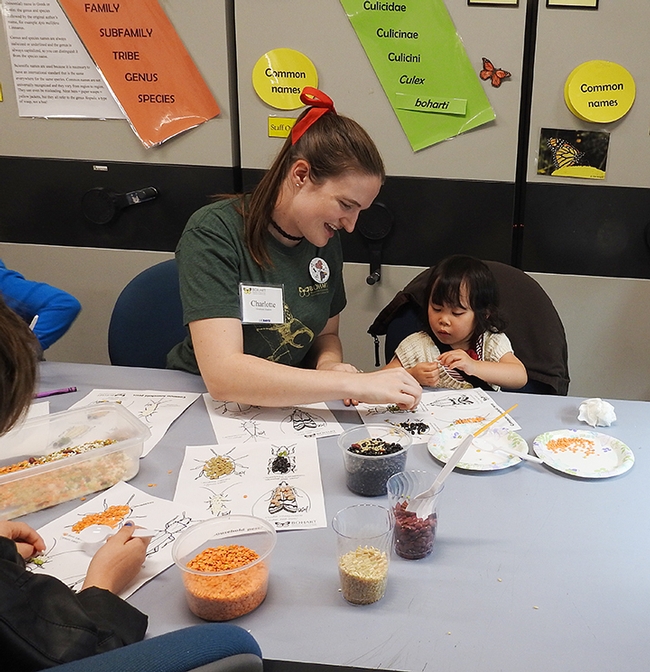
UC Davis entomology graduate student Charlotte Herbert helps Norah Nguyen of Vacavile, who will be three in January, with an arts and crafts activity. (Photo by Kathy Keatley Garvey)
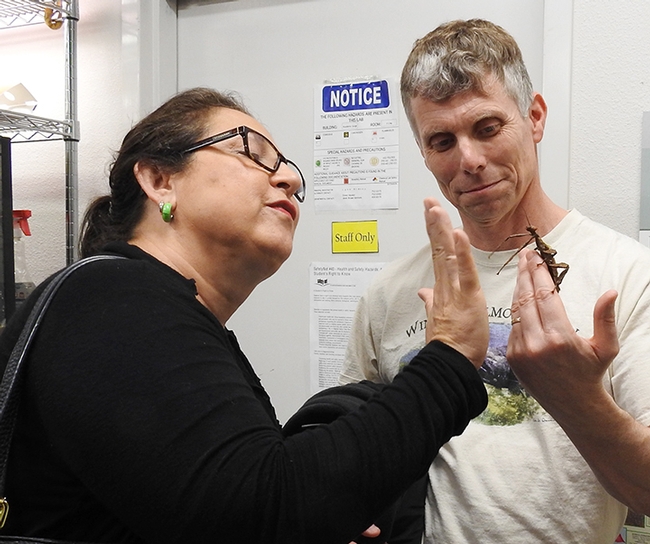
Newly elected Winters City Council member Jesse Loren high-fives a walking stick, perched on the hand of her husband, Brian Bellamy. (Photo by Kathy Keatley Garvey)
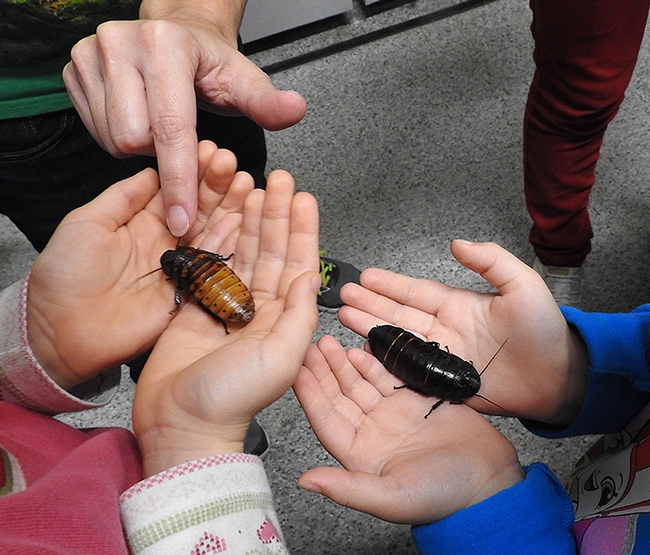
Madagascar hissing cockroaches, aka "hissers," occupy hands. (Photo by Kathy Keatley Garvey)

A Chaco golden knee tarantula, fondly nicknamed "Coco McFluffin," drew lots of interest. (Photo by Kathy Keatley Garvey)
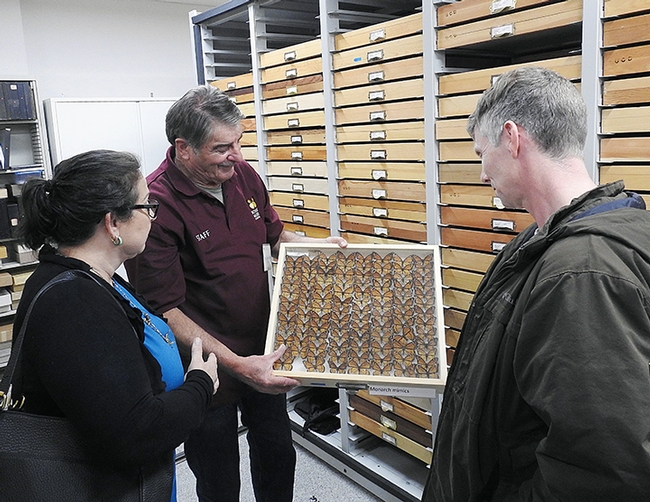
Bohart Museum associate Greg Kareofelas (center), shows viceroy butterflies to newly elected Winters City Council member Jesse Loren and her husband, Brian Bellamy. (Photo by Kathy Keatley Garvey)
'Invited' Guests and 'Uninvited' Pests at the Bohart Museum Open House Nov. 19
When the Bohart Museum of Entomology hosts its open house, “Uninvited Guests: Common Pests Found in the Home," from 1 to 4 p.m., Saturday,...

Bohart Museum volunteer Noah Crockette, a high school senior planning a career in entomology, stands by the many items in the museum's gift shop. (Photo by Kathy Keatley Garvey)
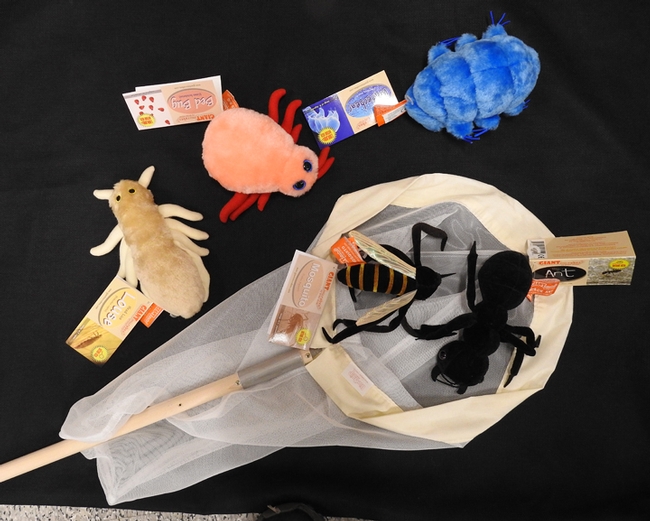
These are some of the stuffed animal critters available in the gift shop: (clockwise, from left) louse, bed bug, tardigrade, ant and mosquito. (Photo by Kathy Keatley Garvey)
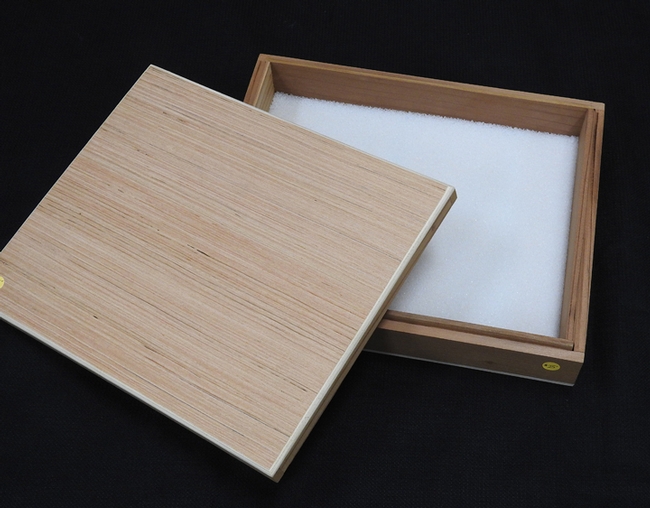
Entomologist Jeff Smith, who curates the Bohart Museum's butterfly and moth collection, has made these insect collection boxes, available at the gift shop. (Photo by Kathy Keatley Garvey)
Top 10 pests in gardens and landscapes and how to control them
Download the free booklet at the bottom of the page!
1. Ants
Most people deal with ants around their home at some point. Because most ants live outdoors, focus efforts on keeping ants from entering buildings by caulking entryways. Follow good sanitation practices to make your home less attractive to ants. Spraying ants inside the home will not prevent more ants from entering. Use baits to control the ant colony. Pesticide baits work by attracting worker ants who then take the poison back to the nest where the entire colony, including queens, can be killed. In the landscape, ants protect honeydew-producing pest insects from predators, so use sticky barriers or insecticide baits to keep ants out of trees and shrubs.
- Find out more at http://www.ipm.ucanr.edu/QT/antscard.html
2. Aphids
Aphids can curl leaves and produce sticky honeydew, but they rarely kill plants and you usually can wash them off with water. When aphid numbers get high, natural enemies such as lady beetles (lady bugs), lacewings, syrphid fly larvae, soldier beetles and others frequently feed on them, eliminating the need for pesticides. Protect these good bugs by avoiding the use of insecticides that can be toxic to a broad variety of insects. Ants protect aphids from these natural enemies, so keep ants away from your garden as well. When pesticides are necessary, use less toxic products such as insecticidal soaps and oils.
- Learn more about controlling aphids here: http://www.ipm.ucanr.edu/QT/aphidscard.html
3. Asian citrus psyllid and Huanglongbing disease
The Asian citrus psyllid (ACP) and the deadly bacterial disease it spreads, Huanglongbing (HLB), threaten citrus trees in backyards and on farms. There is no cure or effective control method for HLB disease. All types of citrus—including oranges, grapefruit, lemons, and mandarins—are affected as well as a few closely related ornamentals. ACP and HLB have already devastated the Florida citrus industry, and now that it is in the Western U.S. it is threatening the California citrus industry as well.
- See where the outbreaks are in California with our helpful Asian citrus psyllid website: http://ucanr.edu/sites/ACP/Distribution_of_ACP_in_California/
- Contact your agricultural commissioner's office, or call the California Department of Food and Agriculture (CDFA) Exotic Pest Hotline at 1-800-491-1899 to confirm a find. Learn more about ACP here: http://www.ipm.ucanr.edu/QT/asiancitruscard.html
4. Gophers
Gophers are small burrowing rodents that feed on roots of many types of plants. A single gopher can ruin a garden in a short time, and gopher gnawing can damage irrigation lines and sprinkler systems. In lawns, their mounds are unsightly and interfere with mowing. Early detection is critical to prevent damage. Use both traps and underground fencing to manage gopher problems. Toxic baits are available but can pose threats to wildlife, pets, and children, especially in backyard situations.
- Learn more about protecting your garden and landscape from gophers here: http://www.ipm.ucanr.edu/QT/gopherscard.html
5. Leaf-feeding caterpillars
Caterpillars, which are the larvae of butterflies and moths, damage plants by chewing on leaves, flowers, shoots, and fruit. Caterpillars in fruit or wood can be difficult to manage because they are hidden most of their life and can cause serious damage even when numbers are low. However, many plants, especially perennials, can tolerate substantial leaf damage, so a few leaf-feeding caterpillars often aren't a concern. Handpicking and beneficial predators and parasites often provide sufficient control. Look for feeding holes, excrement, webbed or rolled leaves, caterpillars, eggs, and good bugs.
- Learn more here:http://www.ipm.ucanr.edu/QT/lfcaterpillarscard.html
6. Peach leaf curl
Peach leaf curl is a fungal disease that affects only peach and nectarine trees. Distorted, reddened foliage in the spring is a distinctive symptom. New leaves and shoots thicken and pucker and later may die and fall off. An infection that continues untreated for several years can lead to a tree's decline. To prevent peach leaf curl, treat peach and nectarine trees with a copper fungicide every year after leaves fall. After symptoms appear in the spring, any treatment will not be effective. When planting new trees, consider buying peach tree varieties that are resistant to the disease.
- To learn more about preventing peach leaf curl click here: http://www.ipm.ucanr.edu/QT/peachleafcurlcard.html
7. Rats
Rats eat and contaminate food, garden produce, and fruit, and transmit diseases to humans and pets. Manage rats by removing food and shelter, eliminating entryways into buildings, and trapping. Snap traps are the safest, most effective, and most economical way to trap rats. For Norway rats, place traps close to walls, behind objects, in dark corners, and in places where you have found rat droppings. For roof rats, place traps in off-the-ground locations such as ledges, shelves, branches, fences, pipes, or overhead beams. Ensure traps are out of reach of children and pets.
- Learn more about preventing and controlling rats here: http://www.ipm.ucanr.edu/QT/ratscard.html
8. Scales
Scale insects suck plant juices and are pests of many trees and shrubs. Infestations can cause yellowing or premature dropping of leaves, sticky honeydew, and blackish sooty mold. Plant parts can distort or die back, depending on the species and abundance of scales. Most plants tolerate low to moderate numbers of scales. Provide plants with proper cultural care, especially irrigation. Encourage scale predators such as lady beetles or lacewings and look for parasite emergence holes in scale covers. Use sticky barriers or insecticide baits to selectively control scale-tending ants. Consider replacing problem-prone plants because most scales are highly specific to certain plants.
- Learn more about controlling scale populations here: http://www.ipm.ucanr.edu/QT/scalescard.html
9. Snails and slugs
These slimy mollusks emerge from hiding at night and chew holes in leaves and flowers of many succulent garden plants and fruit. Management requires a vigilant and integrated approach that includes eliminating moisture and hiding spots, trapping, setting up barriers, and handpicking. Regularly remove snails from shelters you can't eliminate such as low ledges on fences, undersides of decks, and meter boxes. Place traps in your garden and dispose of trapped snails and slugs daily. Reduce moist surfaces by switching to drip irrigation or watering in the morning rather than later in the day. Consider snail-proof plants such as impatiens, geraniums, begonias, lantana, nasturtiums, and many plants with stiff leaves and highly scented foliage such as sage, rosemary, and lavender.
- Learn more about controlling snails and slugs with and without pesticides in your garden here: http://www.ipm.ucanr.edu/QT/snailsslugscard.html
10. Weeds in landscapes
Prevent weed invasions in new beds with good site preparation. Keep weeds out with an integrated program that includes competitive plants, mulches, and hand removal. Be particularly vigilant about removing aggressive perennial weeds. You rarely should need herbicides in established landscape plantings. Mulches prevent weed seed germination by blocking sunlight. Remove small weeds by hand before they flower and set seed. Use shallow cultivation or hoeing to remove annual weeds from ornamental plantings. Only use herbicides for special-problem situations before establishing new plantings or for difficult-to-control perennial weeds.
- Learn more about controlling weeds in your landscape here: http://www.ipm.ucanr.edu/QT/landscapeweedscard.html
To see all of the University of California's Statewide Integrated Pest Management Program's information on home, garden, and landscape pests, visit http://www.ipm.ucanr.edu/PMG/menu.homegarden.html
For other short pest “Quick Tips” like the ten above, see http://www.ipm.ucanr.edu/QT/
To read even more in-depth, peer-reviewed information on many other common home and landscape pests in California, see the Pest Notes series at http://www.ipm.ucanr.edu/PMG/PESTNOTES/index.html


